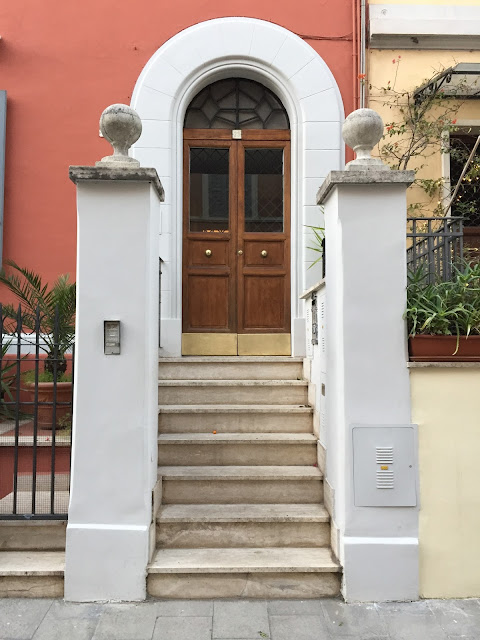Questa strada di Roma è stata spesso utilizzata come set cinematografico per il suo fascino e per la sua atipicità rispetto al tessuto urbano dei quartieri più centrali della città.
Denominata dai romani "piccola Londra" è una strada pedonale del quartiere Flaminio (precisamente via Bernardo Celentano) chiusa da due cancelli ma accessibile ai visitatori; per molti ricorda alcune strade della capitale britannica perché è costeggiata da case basse, dalle facciate colorate e decorate, ciascuna con il proprio piccolissimo giardino recintato con cancellate in ferro.
A molte di esse si accede con brevi scale e attraverso portoncini in legno dall'aspetto molto British.
In realtà le facciate ad intonaco, la scelta di materiali durevoli anche se economici, e di motivi decorativi come lesene ed incorniciature realizzati in stucco, è proprio della tradizione romana, ed in particolare del Barocchetto Romano, tentativo di rendere più gradevole l'edilizia residenziale.
Dalle informazioni che ho raccolto, ma mi riprometto di approfondire l'argomento, sembrerebbe essere stata progettata da Quadrio Pirani nel primo decennio del novecento, uno dei maggiori esperti dell'epoca nella progettazione di edilizia residenziale pubblica, popolare e non.
Oggi la strada ci affascina per la sua tranquillità e per l'inaccessibilità da parte delle auto che ne fa un'oasi in un quartiere bello ma caotico ed intensivo come il Flaminio.
A bit 'of London but not too much
This road of Rome has often been used as a film set for his charm and his to be atypical compared to the urban fabric of the most central districts of the city;
called by the Romans "Little London" is a pedestrian street in the Flaminio district (specifically via Bernardo Celentano) closed by two gates, but accessible to visitors; for many peoples it reminds some streets of the British capital because it is lined with low houses, with colored and decorated facades, each with its own small fenced garden with iron gates.
A lot of them are accessed with short stairs and through very British wooden doors.
In reality the choice of durable materials even if cheap, and decorative designs as pilasters and framing made of stucco, is proper to the Roman tradition, and in particular of the Roman Barocchetto, a attempt to make the housing more pleasant.
From the information that I have gathered it would seem to have been designed by Quadrio Pirani in the first decade of the twentieth century, a leading expert in the era of public housing design, popular and otherwise.
Today the street is fascinating for its tranquility and the inaccessibility by car which makes it an oasis in a nice but chaotic and intensive neighborhood as the Flaminio.
















Nessun commento:
Posta un commento